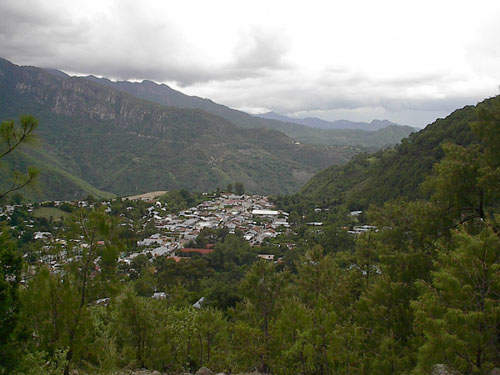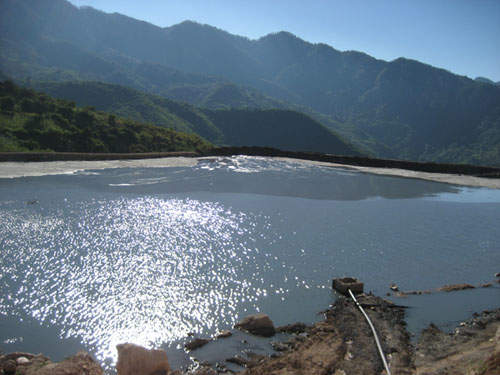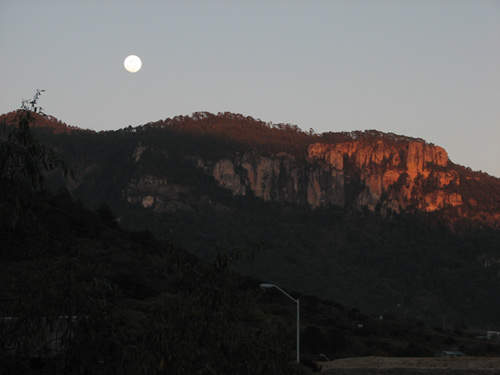The Topia silver-zinc mine is situated in the west-central Durango State of Mexico. The area covers four blocks of mineral exploitation concessions over 6,344ha. Minera Mexicana EI Rosario, a subsidiary of Great Panther, owns 100% of the concessions.
The Recompensa vein was reopened in January 2009 under new mining contracts. It contributed to first quarter results when high records were set for silver and ore grade.
The Topia mine targets clean mining of high-grade narrow veins with reuse mining. The exploratory development is limited to known areas where there is strong potential for wider and higher grade veins.
The Topia mining district is among the oldest in Mexico. Most of the mine’s veins lie on the Great Panther property.
Sampling
Development and stoping at the Recompensa vein is at 1,170 and 1,212 levels. Main haulage level (1,170) channel sampling has indicated 133m strike length averages of 16.87g/f gold, 175g/t silver, 3.17% zinc and 3.8% lead across an average width of 0.24m.
At 1,212 level, channel sampling indicated 120m development from surface to the east face, averaging 19.04g/t gold, 851g/t silver, 10.85% zinc and 8.12% lead over an average width of 0.28m.
The cost of producing silver was high throughout 2008. A plan designed for 2009 was revised to limit exploration development of high grade veins, such as Cantarranas East (Hormiguera and San Miguel), Gregorio, Recompensa and Rosario. Topia produced 661,000oz of silver in 2009.
By May 2009, around 700m of strike length on the Recompensa vein had been sampled. Because of rough terrain, the eastern extent of the vein is not yet explored. It may merge with the Oliva vein, which is currently in production. In spite of the narrow widths of the Recompensa vein, it is yielding good grades.
Results from an exploration programme consisting of 7,200m surface drilling to test the Recompensa vein along 500m of strike drilling below the 1,170 level were reported by mid 2010. By 27 May 2010, the Recompensa Vein had been extended to a strike length of 500m horizontally and up to a length of 50m to 60m vertically below the mine workings.
The eastern most hole has indicated several intersections of mineralized veins, averaging 9.1g/t gold, 601g/t silver, 12.8% lead and 15.3% zinc over 0.28m. At the northern end, three significant intersections in the footwall of the recompensa vein form part of the Olivia vein system which is currently in production. One of these reported 7.34g/t gold, 496g/t silver, 2.5% lead and 3.17% zinc over 0.16m (true width 0.15m). The Recompensa and the Olivia veins merge in the west. A number of drill holes have been planned to test the Recompensa / Oliva Veins in the future.
Drilling at the San Jorge structure reported 3.15m averaging 1,681g/t silver, 0.88g/t gold, 2.40% lead and 5.32% zinc. Values returned at the Cantarranas vein included 0.19m averaging 2,820g/t silver, 1.19g/t gold, 3.29% lead and 4.04% zinc.
Along the San Gregorio vein, drilling focused on confirming the vertical extent of economic mineralization and testing the most western section of the San Gregoria/ Mina 7 mining area. Drilling at the western section of the El Rosario vein has revealed that the vein’s productive section continues up to an elevation of 1,600m, about 80m below the current mine workings.
Mineralisation
Development along the Recompensa vein had yielded high-gold grades along with good grades of silver, lead and zinc.
The Recompensa vein is the lowest elevation vein being exploited at the Topia mine. It is distinctive due to high grade gold values associated with high silver, lead and zinc. The vein has quartz gangue with semi-massive sulphides forming pyrite, galena, sphalerite, arsenopyrite and minor chalcopyrite. The Topia district veins are characterised by quartz or barite-quartz gangue with galena, sphalerite, minor pyrite and trace to nil chalcopyrite.
At Topia, the mine ore grade or productive veins are fixed to a limited vertical extent of 200m to 300m, but can extend laterally along strike for as much as 4km. Besides the Recompensa Vein, drilling is ongoing at the La Prieta concession that was acquired by Great Panther in 2009. The La Prieta vein has no past drilling history.
Mineral resource estimations will begin on all viable areas with the completion of drilling in the third quarter of 2010. The additional mineral resource will enable the company to boost annual production by 20% from 2010 to 2012.






